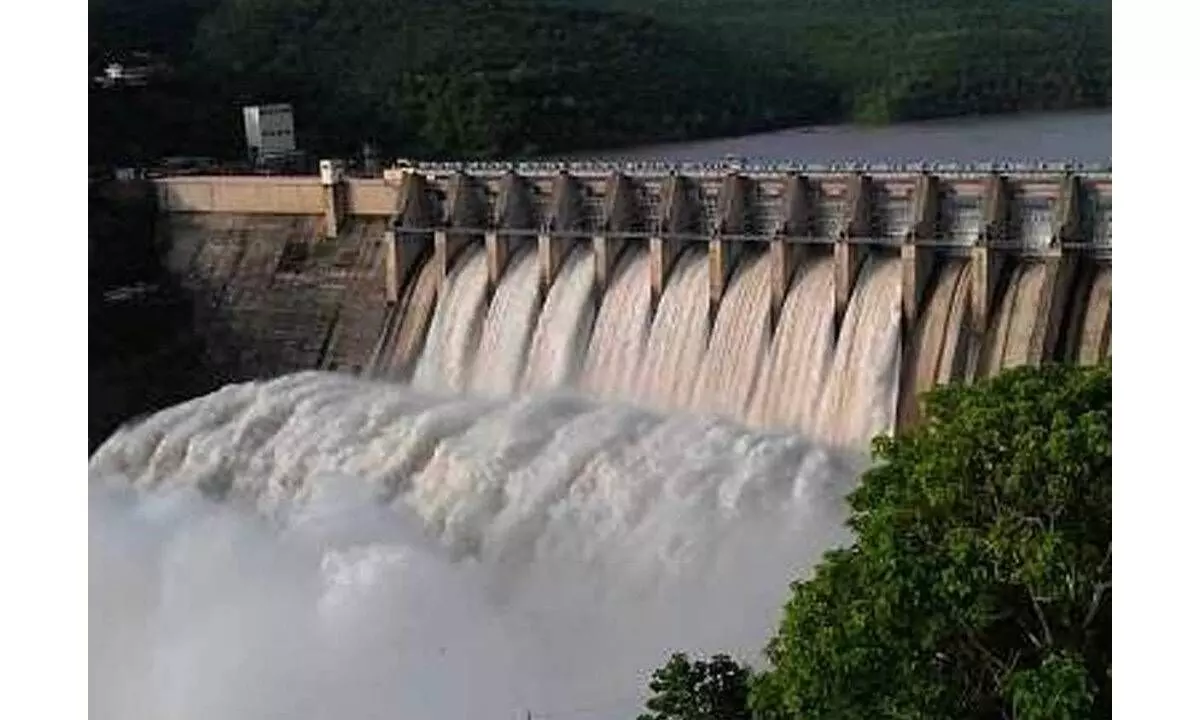Union minister takes stock of 2000 MW Subansiri hydro project in NE ahead of COP28 meet
Union Minister for Power and New & Renewable Energy, R.K Singh after his visit to the 2000 MW Subansiri Lower Hydroelectric Project in Arunachal Pradesh/Assam expressed satisfaction over the pace of ongoing work and urged NHPC officials to complete the project on schedule.
image for illustrative purpose

New Delhi, Nov 28: Union Minister for Power and New & Renewable Energy, R.K Singh after his visit to the 2000 MW Subansiri Lower Hydroelectric Project in Arunachal Pradesh/Assam expressed satisfaction over the pace of ongoing work and urged NHPC officials to complete the project on schedule.
The minister’s visit to the hydro power project site comes ahead of the COP28 meet in Abu Dhabi to fight climate change. He told journalists that the importance of hydel projects has increased since round-the-clock renewable energy is not possible without hydro power.
“I went into all the details and I believe that by and large, the Subansiri project is progressing as it should. The importance of hydro projects has increased since we need to make energy transition, reduce emissions and move to renewables. While we have solar and wind, too, among renewables, round-the-clock renewable energy is not possible without hydro. Our hydro capacity is increasing,” he added.
The minister took stock of the ongoing construction activities and was briefed about the progress on Monday. Later in the day, he took a review meeting in which he was briefed about the various steps taken to address the challenges in the project.
Addressing NHPC officials and representatives of contractors of major works, Singh instructed everyone to work with maximum zeal to complete the project as per schedule.
The minister also said that India’s hydro power capacity is increasing, and besides Subansiri which is a large project, the Government of Arunachal Pradesh has entered into MoUs with central public sector undertakings for 13 projects, which will amount to a hydroelectric capacity of 13,000 MW in Arunachal.
“These projects will bring in investment of around Rs 1.4 lakh crore in the state, resulting in quadrupling of per capita income. And the nation will get clean power. Similarly, five hydel projects are under construction in Jammu & Kashmir; hence, our hydro potential in J&K too is moving ahead and a lot of investment is coming in," Singh added.
The minister spoke of the efforts being taken to better tap into the available hydro power capacity of the country. “Today, our hydro power capacity is 47,000 MW, which is 35% of our available hydro power potential. Developed countries however have utilised around 70%-80% of their available hydro potential.”
Singh said India’s power demand is growing and this requires addition of power capacity at a fast pace. “Our power demand grew by 20% in August, September and October 2023, relative to the previous year. Our demand will keep growing at this rate, since according to NITI Aayog, our economy will keep growing at 7.5% for the next two decades. The peak demand in 2013 was around 1.35 lakh MW, while today it is around 2.31 lakh MW. Our power demand will double by 2030; our total consumption today is 1,600 billion units, which will become around 3,000 billion units. However, even now, our power consumption is low compared to developed countries; Europe’s per capita power consumption is around 3 times that of ours today. Our challenge hence is to add power capacity as fast as the growth in our power demand.”
He said India’s under-construction capacity in renewables is around 70,000 MW, while in thermal, it is 27,000 MW. However, another 53,000 MW would be added to under-construction thermal capacity to enable the country to meet its power demand of 2030.
The minister said that India has become a world leader in energy transition and that India has been pursuing a path of responsible growth. “In COP21 in Paris, we had committed to make 40% of our capacity to be from non-fossil-fuel sources by 2030; we achieved this target in 2021, nine years in advance. Hence, we are growing faster than developed countries,” he added.
“Developed countries have become developed by using fossil fuels. Hence, if we need to use fossil fuels for our growth, we will use it. Our per capita carbon emissions are one third of global average; while per capita greenhouse gas emissions of developed countries are three times that of global average. 80% of the carbon dioxide load in the atmosphere due to which there has been a rise in global temperature is due to the emissions by developed countries, while our contribution to the cumulative load is just 3% and our population is 17% of world population,” he explained.

